The site of the temple was picked by an Indian monk, Hui Li, who, while traveling through the area found immense peace and serenity from the surrounding environment and was convinced that this is due to the presence of the immortals and deities and that it is only appropriate that a proper dwelling place be built in honor of the gods.
Due to the nature of the atmosphere in the area, the monk believed that it is a place suitable for one to find inner peace in their souls and thus the name, 'Temple of the Soul's Retreat' was conceived.
Lingyin Temple was at the peak of its glory during the rule of King of the Wu Yue State; the period of the Five Dynasties. The King, in showing his respect and devotion to his religion and Buddha, gave the temple a large scale facelift and the temple then boasted of nine buildings or nine multi-storey levels, 18 pavilions, 72 halls, and more than 1,300 dormitory rooms to house 3,000 monks there. The mighty architecture and layout provides a resplendent image to the temple.
However, that did not prevent the temple from being subject to the damages resulting from the war and battles taking place through the revolutionary shifts in the civilization of China.
At the same time, the restoration of the temple continued to take place for several times; in no less than 16 times and the current temple was from the most recent restoration in the Qing Dynasty.
Despite the many different changes and refurbishment of the temple, it is still interesting to note that this is still one of the largest, if not most affluent temples in the country with its many temple halls, grottoes and pagodas within the premises.
The temple is designed according to the typical Song Dynasty five-hall structure; inviting visitors and devotees into the following serene halls which house gigantic statues of Buddhist gods and deities:
1. Hall of the Heavenly Kings
2. Grand Hall of the Great Sage
3. Hall of the Medicine Buddha
4. Sutra Library
5. Huayan Hall
6. Hall of the Five Hundred Arhats
(Source: Wikipedia)
I do not have much photos from the Ling Yin Temple as our tour guide told us not to take photos of a place of worship, due to some superstitions. However, being personally a visitor to various temples in my life, I find the tour guide's explanations weird and ridiculous and I was supported by most of the other Buddhist visitors in the same tour.
One fascinating point of interest here is the adjoining Fei Lai Feng (飞来峰); also known as the Peak Flown from Afar in its direct translation.
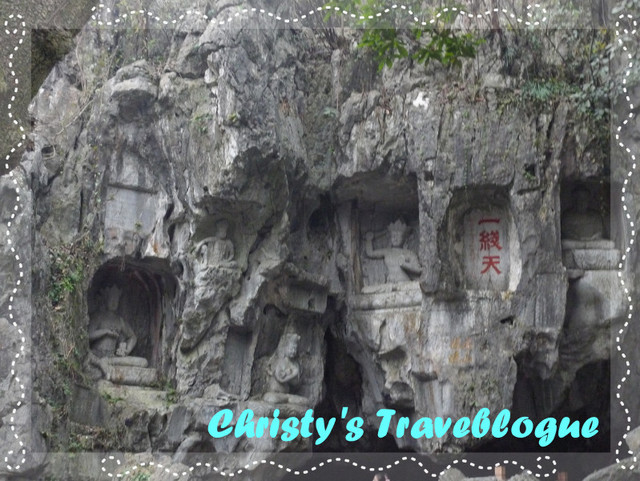
The unique name was given by the same monk, Hui Li, who was astonished to see a rather unique- looking peak which stood out compared to the other mountain peaks surrounding it. The shape of the peak and the mountain itself reminds him of the typical mountains from his hometown in India, but rather out of place in China and thus, Hui Li deduced that this peak must have flown from India to land here in China; explaining the single mountain which had its own appearance.
The name Fei Lai Feng, or Peak Flown from Afar was then born.
The nature of Fei Lai Feng is in the pure form of limestone mountain; distinguishing it from the other sandstone mountains surrounding it. It is really a wonder that there is a limestone mountain existing among the regular sandstone mountains in the same area.
Besides the natural form of Fei Lai Feng, the mountain also housed large stones on which some of the shapes were said to resemble that of animals such as a flying dragon, a crouching tiger, a fleeing monkey, and also a running elephant.
When one visits the Lingyin Temple, the Fei Lai Feng must not be missed from the itinerary as well. The peak, besides its unique name and also story of origin and shapes of its stones, is also home to hundreds of Buddha statues engraved within the walls of the mountain.
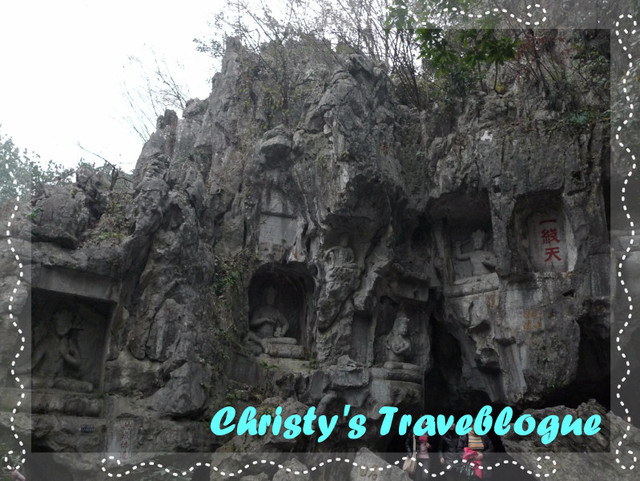
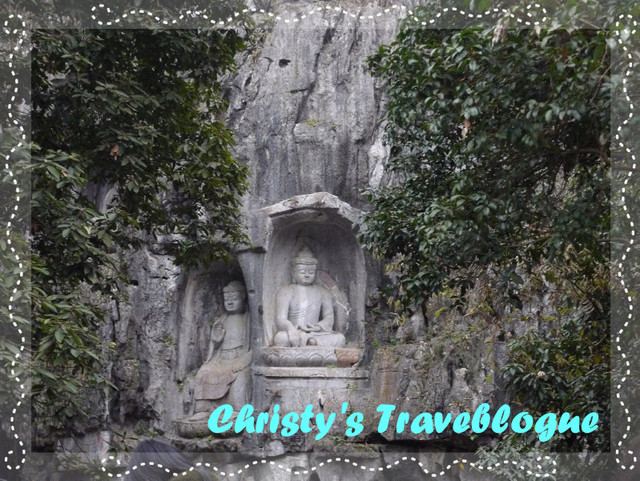
The statues come in different forms and shapes, from standing to sitting and even sleeping and are the various deities associated to Buddhism.
The 330 statues in Fei Lai Feng have been there since the 10th to the 14th centuries; holding their histories and age in pride despite the effects of time on the facade of the stones.
One of the most prominent statues is the Laughing Buddha; or Maitreya who is also known as the Happy Buddha for he was one of the statues easily spotted with his large belly and signature laugh on his face.
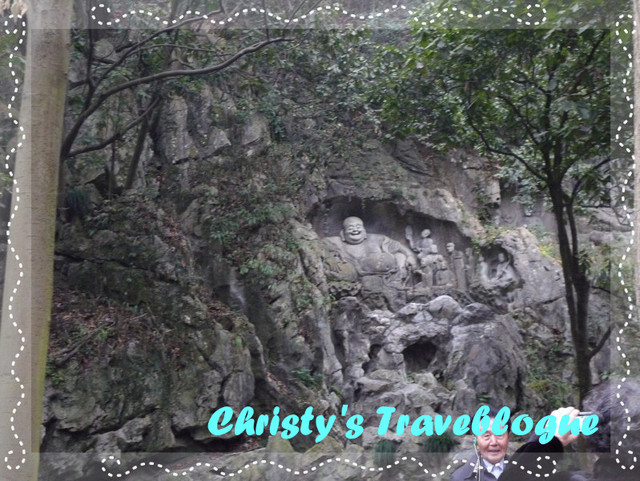
The large belly on the Laughing Buddha was explained to be holding all the troubles of mankind and the world.
The many statues of Buddha forming the grottoes on Fei Lai Feng was also said to have its own story. It seems that during the time the peak flew its way from India, it caused damages to many villages and towns; ending in major destruction of the villages it passed before landing on this land. Therefore, to avoid further problems, an approximation of 500 statues of Buddha were built in the mountain to suppress the power of the mountain.
When one explores the caves within the mountains and gaze at the many Buddha statues, it is inevitable that one can imagine of the many legends and stories associated which are inspired and concocted from this mountain.
Of the many caves, there is one Shexu cave where there is a slight gap at the roof of the cave. It is said that if one were to look through that gap at the right time, one can see the glorious beam of sunlight; or that ray of sunshine which shines through and into the cave; creating that famous 'Gleam of the Sky'.
Another part to explore is on the other side of the Fei Lai Feng peak where a Cui Wei Pavilion can be found. The named pavilion was built to honor the brave national hero, General Yue Fei.
The pavilion today is with a fresh coat of paint, following its restoration in the year 1942 after fallen to ruins several times during war.
The remains of the monk Hui Li, the founder of this place was also laid to rest in a pagoda at the foot of the Fei Lai Feng.
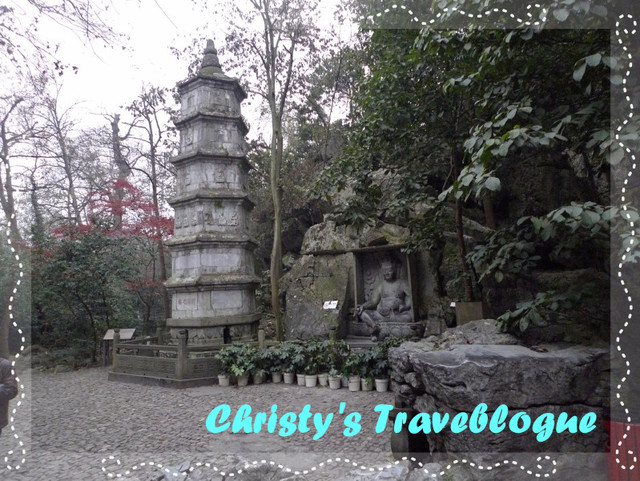
A place of solace and reflection, the Ling Yin Temple and Fei Lai Feng are places to promise calmness and peace of mind when one is there.
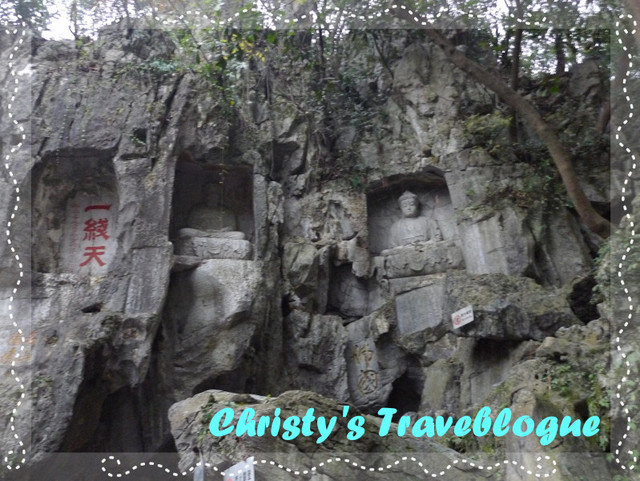
These are the places in Hangzhou where one is said to be able to truly contemplate and walk away, with memories to last a lifetime following that one visit.


No comments:
Post a Comment